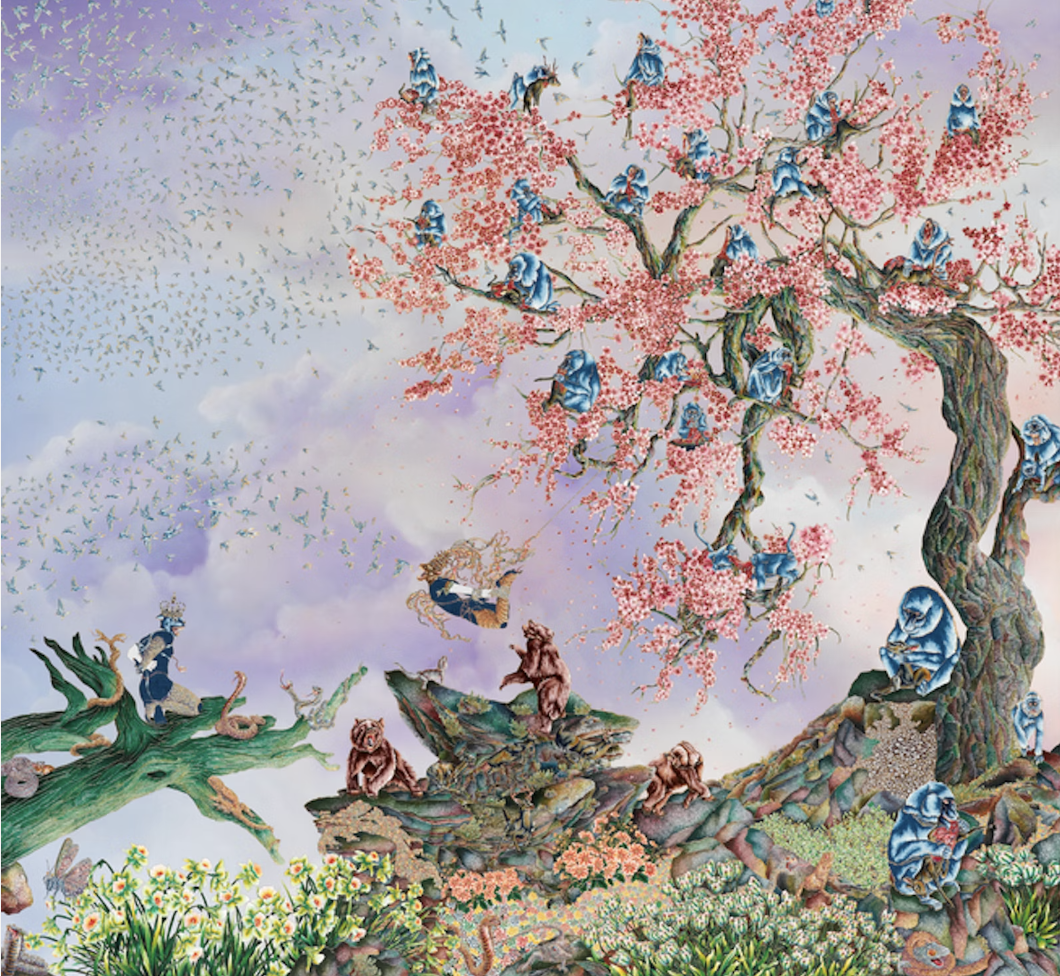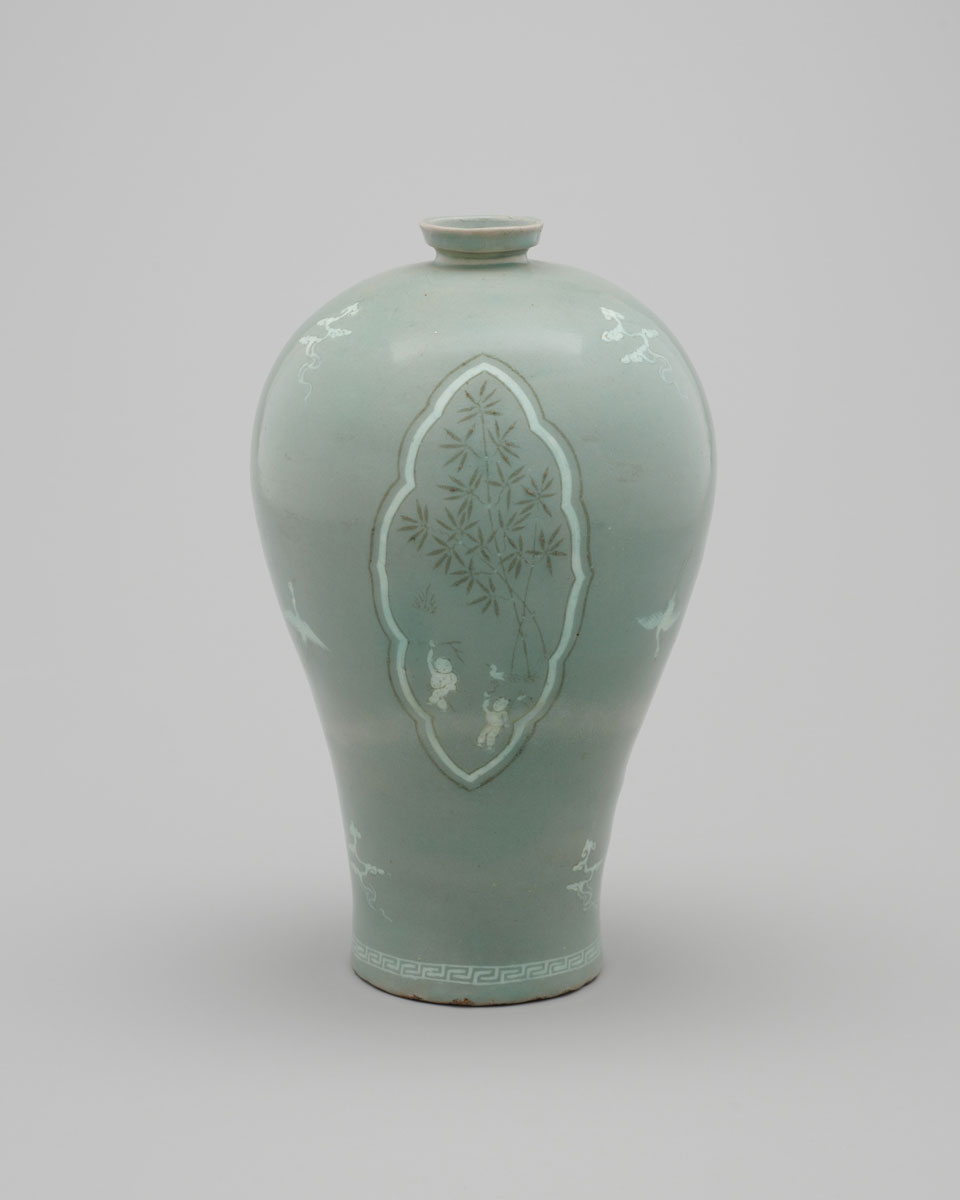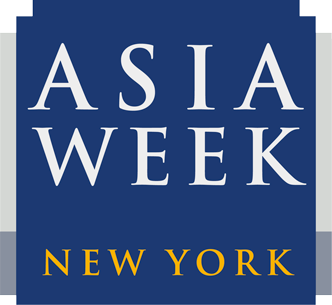NEWLY OPENED EXHIBITIONS

Ochiai Yoshiiku, Picture of Men and Women from Many Countries (Bankoku danjo jinbutsu zue),1861, color woodblock print; oban triptych, 36.6 × 72.5 cm (14 7/16 × 28 9/16 in.), Gift of Emily Crane Chadbourne
The Dawn of Modernity: Japanese Prints, 1850–1900
July 15 – October 13, 2025
Gallery 107
After almost 250 years of near-total isolation, Japan opened to international trade in 1859.
American commodore Matthew Perry had arrived in 1853 with a fleet of imposing, steam-powered warships, triggering an influx of foreign ideas, goods, and technologies to Japan. Yokohama, a small trading settlement, became the center of this new commercialism. Japanese printmakers documented these watershed events and promoted the image of a modern nation in ascent.
Influenced by the introduction of photography and Western newspaper illustrations, printmakers explored new formats. Many works in this exhibition are triptychs—horizontal compositions spanning three panels—particularly well suited to depicting wide boulevards, lengthy steam trains, and large buildings. These new subjects and the broader format appealed to both domestic and international audiences.
In 1868 Japan’s shogunate, the government that had once kept it largely isolated, collapsed. The emperor was restored, ushering in the Meiji period, which lasted until 1912. Under Emperor Meiji, Japan rapidly modernized, led by the mottoes of Bunmei Kaika (civilization and enlightenment) and Fukoku Kyōhei (enrich the country, strengthen the military). The prints in this gallery reflect Japan’s attempts to define itself between Eastern and Western influences and to become Asia’s modern empire.
To learn more, click here.
Pixy Liao: Relationship Material
July 26 – December 8, 2025
Artist Conversation and Performance: Saturday, July 26 from 1-2pm
Galleries 1-4
For the past 18 years, artist Pixy Liao (廖逸君) has collaborated with her partner, Takahiro Morooka (諸岡高裕, nicknamed Moro), on a series of staged self-portraits. These often funny photographs document the evolution of the couple’s relationship, examine the power dynamics between artist and muse, play with expressions of physical intimacy, and prod at conservative gender roles. Their collaborations have expanded over the years to include sculptures and installations as well as music, which they perform as the duo PIMO.
To celebrate the opening of Pixy Liao: Relationship Material, Pixy and Moro will join assistant curator Yechen Zhao in a conversation about the evolution of this artistic and romantic partnership. The conversation will be followed by a musical performance by PIMO.
To learn more, click here.
ONGOING EXHIBITIONS
Jitish Kallat: Public Notice 3
Sep 9, 2024 – Sep 10, 2025
Jitish Kallat’s site-specific installation, Public Notice 3, returns to the Art Institute of Chicago’s Grand Staircase this fall after a 14-year hiatus.
Initially unveiled on September 11, 2010, the work connects two significant historical events separated by 108 years: the First World Parliament of Religions which began on September 11, 1893, and the terrorist attacks on the World Trade Center and the Pentagon on September 11, 2001. At the earlier event, the World Parliament of Religions, held in what is now the museum’s Fullerton Hall, a young Hindu monk, Swami Vivekananda electrified audiences with a powerful speech calling for an end to religious fundamentalism, intolerance, and bigotry.
This very speech forms the basis of Kallat’s work, as the staircase risers are illuminated by Vivekananda’s words in five alternating colors—red, orange, yellow, blue, and green. These colors, borrowed from the decade-long advisory system of the US Department of Homeland Security following the attacks of 9/11, formed a spectrum denoting terrorism threat levels—from red for severe to green for low. Kallat transforms this motif of public vigilance into a radiant signal, reflecting Swami Vivekananda’s timeless and urgent plea for tolerance and universal acceptance.
To learn more, click here.

Raqib Shaw, Paradise Lost (Chapter 1) (detail), 2009–11. Courtesy of the artist. © Raqib Shaw.
Raqib Shaw: Paradise Lost
Raqib Shaw: Paradise Lost
June 7, 2025 – January 19, 2026
Artist Conversation: Saturday, June 7 from 2-3pm
Gallery 141–142
We are pleased to debut Kashmir-raised, London-based artist Raqib Shaw’s more-than 100-feet-wide, 21-panel Paradise Lost (2009–25), the artist’s most ambitious and personal project to date. This magnificent allegorical painting takes viewers on a spellbinding journey, from the nocturnal solitude of the artist’s childhood in Kashmir to the frenzied daylight of the art world and the West to finally a fragile, renewed dawn. Each panel is dense with symbolism: mythical beasts, anthropomorphic hybrids, collapsing kingdoms, and natural beauty in various states of transformation. Throughout, the work is dotted with images of the artist, sometimes as a humanoid creature with different animal heads, at another time as a monkey looking with awe at the gleaming edifices and the wealth of the West, and sometimes unambiguously in full human form seated on a bed of saffron under a blossoming cherry tree, lost deep in his thoughts.
The work is not a direct retelling of Milton’s 17th-century poem Paradise Lost, but rather a reflection on the many paradises lost across a lifetime: childhood innocence, creative freedom, mental tranquility, cultural belonging. “This is not just my story,” Shaw explained. “It is the story of each of us, and the story of our times.”
While Shaw has previously shown the first chapter of Paradise Lost, this exhibition marks the first time all four chapters will be displayed, showcasing the fullest extent yet of this epic masterpiece. “This painting was made not only to document a life,” Shaw shared, “but to offer something to those who come after, to offer a space of reflection for emotional recognition and perhaps for quiet rebellion against forgetfulness. I do hope that this work invites the viewer to slow down and to look carefully and to feel without haste.”
Be sure to join a conversation with Shaw on opening day as he discusses his epic masterpiece!
To register for the in-person talk, click here.
To learn more about the exhibition, click here.
GALLERY COLLECTION DISPLAY

Plum Vase (Maebyeong) with Clouds, Cranes, and Children Motifs, Goryeo dynasty (918–1392), late 12th century, stoneware with red and white slip and celadon glaze, h: 13 1/8 in. (33.5 cm); Gift of Mr. Russell Tyson
New Gallery for the Arts of Korea
Ongoing
Gallery 130
This fall, we unveiled a newly imagined and installed gallery for the arts of Korea—our first space fully dedicated to this cultural region.
The new installation presents a wider range of objects than previous displays—extending from ceramics to textiles and painting and spanning 2,000 years from the Three Kingdoms period (about 57 BCE–676 CE) until today. Intentionally located between the Chinese and Japanese art galleries, the thoughtful display offers insight into how these artworks both reflect the religious and material culture of Korea and how they relate to the arts of Korea’s influential neighbors, China and Japan.
Six themes introduce Korea’s long and rich history as well as its religious, political, and material cultures. The first section introduces objects that were made to help understand and spread the teachings of the Buddha. The centerpiece, an 18th-century Buddha statue, is on view for the first time since its acquisition after extensive conservation treatment. A section devoted to celadon and tea culture provides a glimpse into the practice of tea ceremonies during the Goryeo dynasty (918–1392), and objects grouped around the idea of symbolism illustrate how beautiful embellishments represent desired outcomes, such as a blissful marriage, career advancement, and long life.
The remaining three sections focus on how material culture responded to a major ideological, political, and cultural shift during the Joseon dynasty (1392–1897) as evidenced in the creation of the earthy grey stoneware known as buncheong, elegant white porcelain, and scholars’ objects. The new installation also includes select contemporary works that meaningfully engage with traditional forms and materials.
To mark the gallery’s opening, the space presents two stunning gold objects—a crown and pendant as well as a belt from the Silla kingdom period (about 57 BCE–676 CE). These objects have been designated as Treasures by the Cultural Heritage Administration of Korea and are on loan from the National Museum of Korea through early February 2025. Further enhancing the visitor experience are an interactive feature and video that offer deeper insight into two objects’ symbolism and function.
To learn more, click here.

